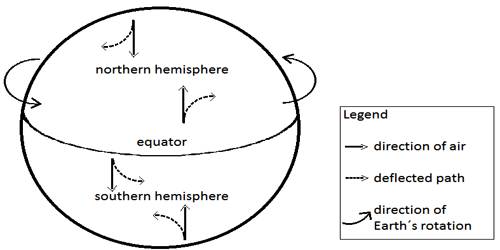

There is no reversal of the angular velocity vector here. This arises from the Earth's loss of angular momentum and the consequent increase in length of day." in Īre you saying that this demonstration on the International Space Station does not conserve angular momentum?įirst off, the top of the book is always turning toward the camera. Secondly there is an apparent increase in the Moon's angular rate of orbital motion (when measured in terms of mean solar time). This increases the Moon's angular momentum around the Earth (and moves the Moon to a higher orbit with a slower period). Read ".First there is a real retardation of the Moon's angular rate of orbital motion, due to tidal exchange of angular momentum between the Earth and Moon. When the Earth's rotation slows due to tidal forces, down, the Moon's angular momentum increases due to tidal forces, and moves to a higher orbit. An observer in space would say that the Earth's tides did not change direction, but would say that the north and south poles flipped.īy the way, the vector sum of the Earth's and Moon's angular momentum is conserved. If the Earth's angular momentum is unchanged, and the Earth's body axis flipped say over in a year (365 revolutions), an observer on Earth would see the east→west direction of the tides change by ~3 degrees per day to west→east. Different sections rotate at different speeds! The Sun actually spins faster at its equator than at its poles.Someone earlier said the tides of the ocean would change the Moons orbit. Because it is a gas, it does not rotate like a solid. Essentially Pluto meets all the criteria except one-it “has not cleared its neighboring region of other objects.” Which way does the Sun rotate?Ĭounterclockwise The Sun spins or rotates on its axis in the same direction as Earth ( counterclockwise, when looking down from the north pole). The International Astronomical Union (IAU) downgraded the status of Pluto to that of a dwarf planet because it did not meet the three criteria the IAU uses to define a full-sized planet. The constant spin of the Earth had our ancestors pretty confused about the true nature of the cosmos. If Earth's spin were suddenly to speed up or slow down, you would definitely feel it. Is it possible to feel the Earth spinning?Įarth is moving at a fixed rate, and we're all moving along with it, and that's why we don't feel Earth's spin. This is because nothing in space is stopping us. Our planet has been spinning for billions of years and will continue to spin for billions more. Why do we not feel the Earth spinning?īut, for the most part, we don't feel the Earth itself spinning because we are held close to the Earth's surface by gravity and the constant speed of rotation. In science, we call that rotating on its axis. At the same time the Earth orbits around the sun, it also spins. The Earth's orbit makes a circle around the sun. How the Sun rotates around the Earth for kids?Įarth orbits the sun once a year and rotates on its axis once a day. The Moon's orbit lasts 27 1/2 days, but because the Earth keeps moving, it takes the Moon two extra days, 29 1/2, to come back to the same place in our sky. … As the Earth orbits the Sun, the Moon orbits the Earth. The Earth's path around the Sun is called its orbit. How the Earth rotates around the Sun and moon? … Therefore, the Earth rotates in an anti-clockwise direction around the Sun. How does the Earth rotate around the Sun clockwise or counterclockwise?Įxplanation: The Earth can rotate anti-clockwise and clockwise about its axis around the Sun depending on where it is viewed from (North or South Pole). … Hence the length of a day on Earth is actually 24 hours. At the same time that the Earth spins on its axis, it also orbits, or revolves around the Sun. This spinning movement is called Earth's rotation. How does Earth rotate?Įarth's Rotation Earth spins around its axis, just as a top spins around its spindle.


This axial tilt remains steady throughout the year. It spins on an axis that is tilted 23 and a half degrees to the plane of its orbit. It orbits the Sun every 365 and one-quarter days. This axial tilt remains steady throughout the year.Earth revolves around an enormous source of energy: the Sun.

Earth revolves around an enormous source of energy: the Sun.


 0 kommentar(er)
0 kommentar(er)
